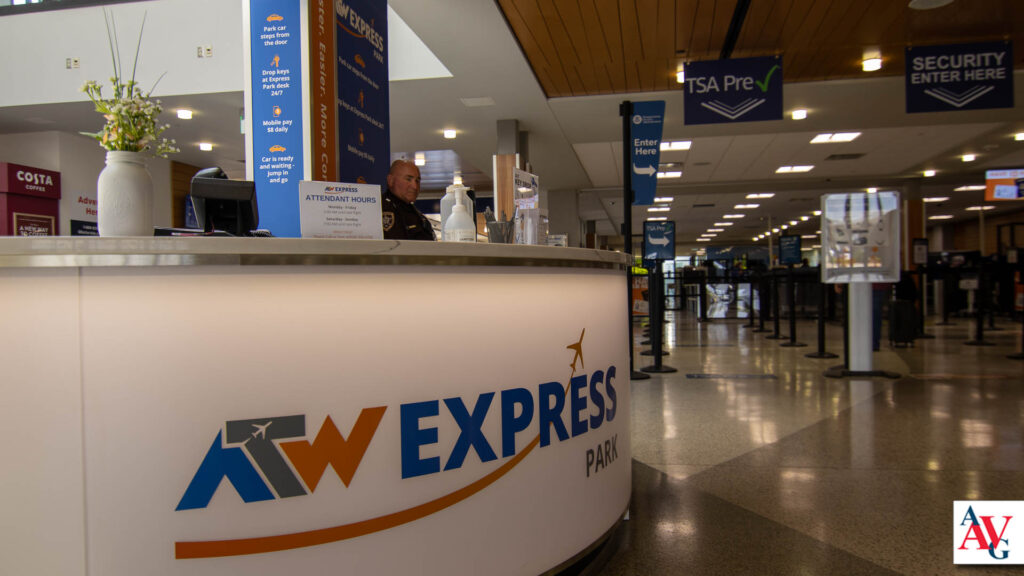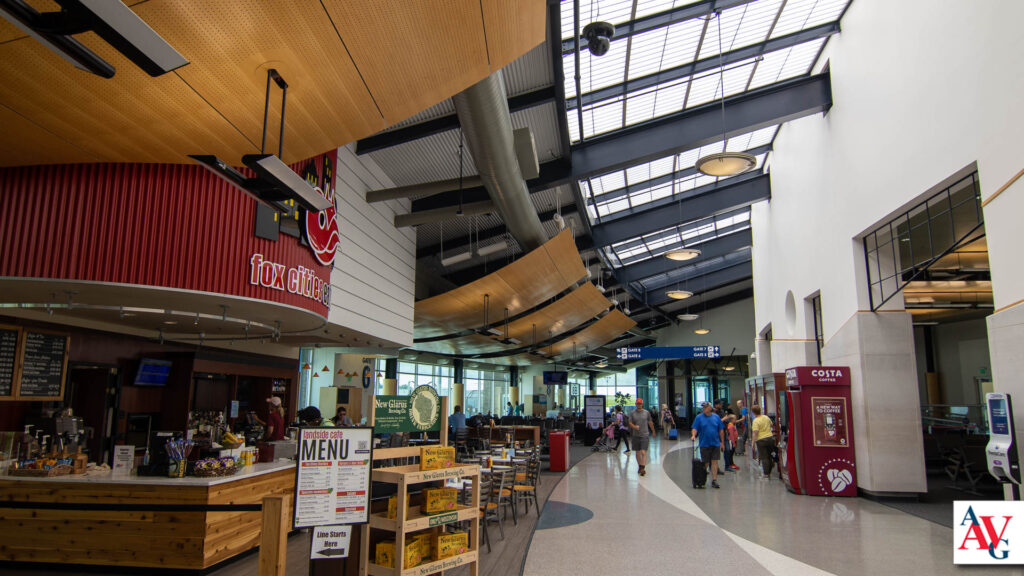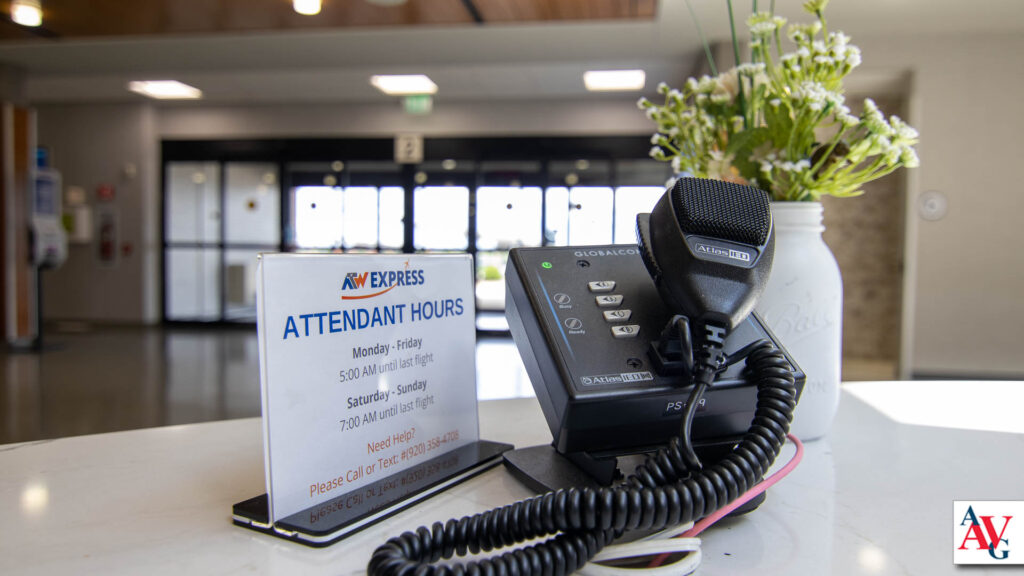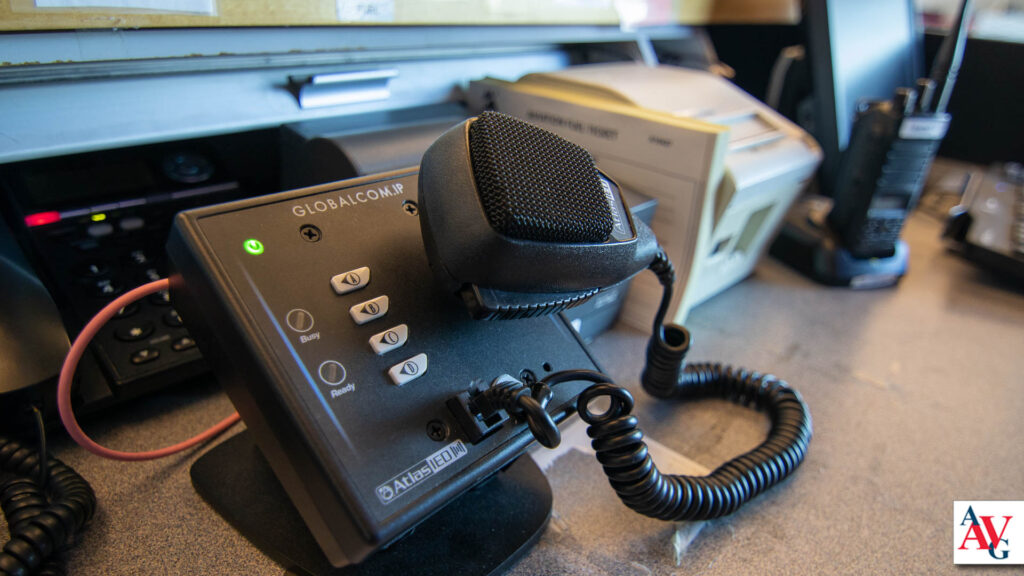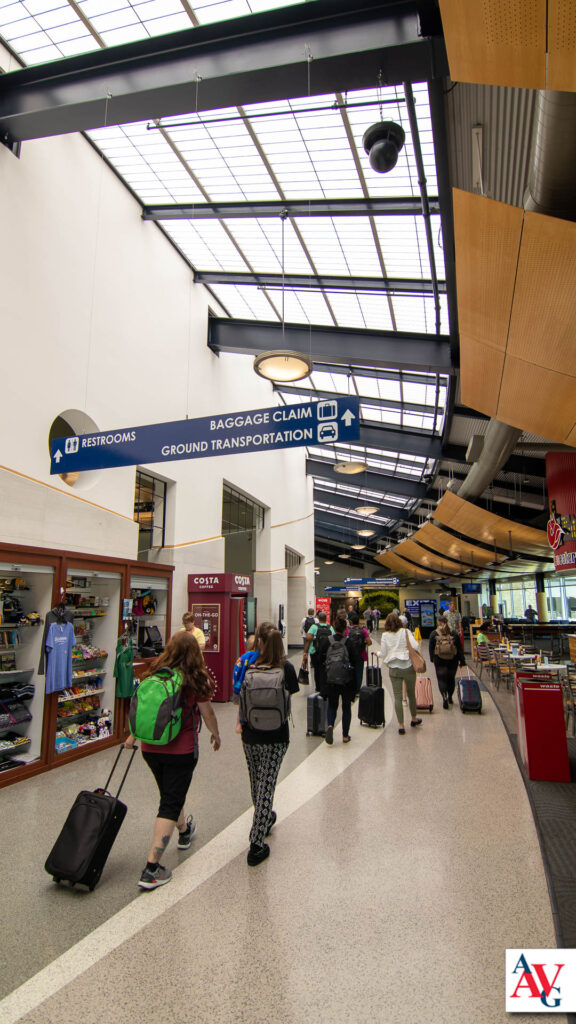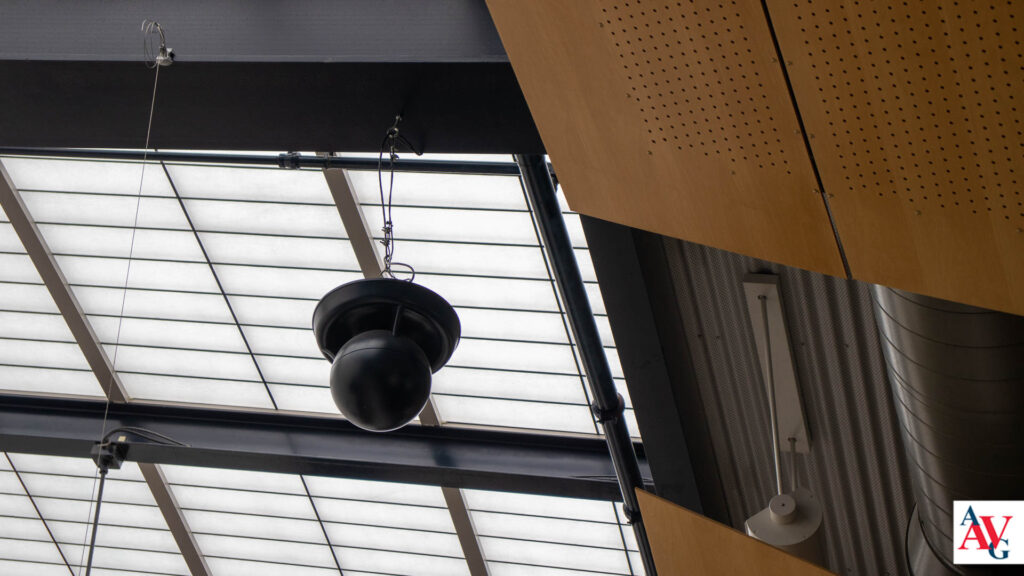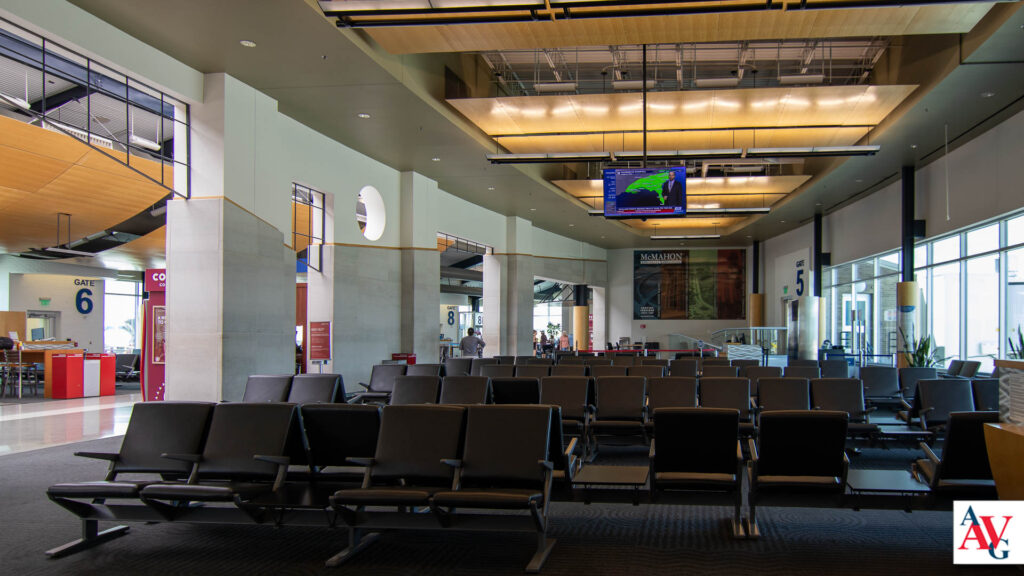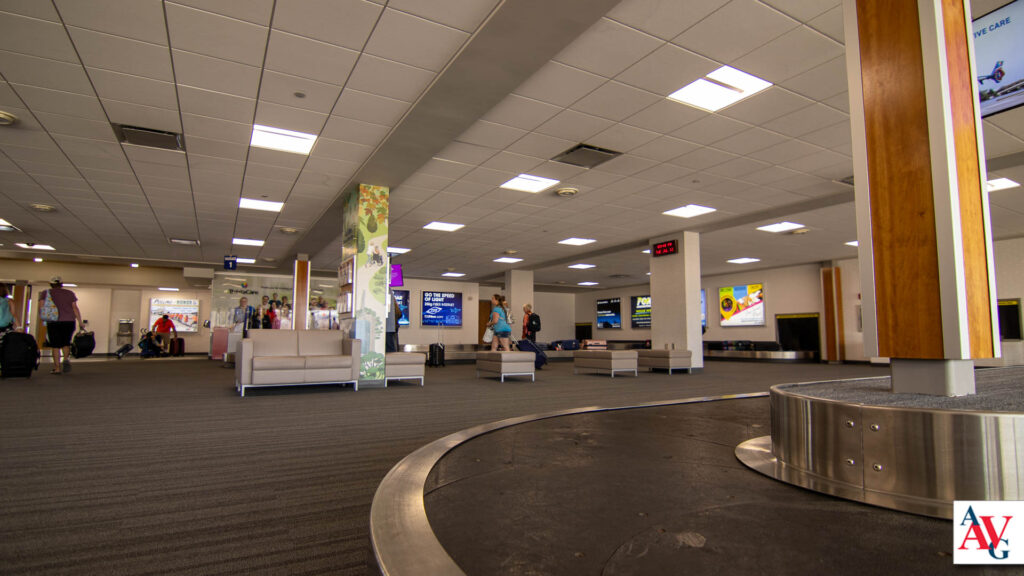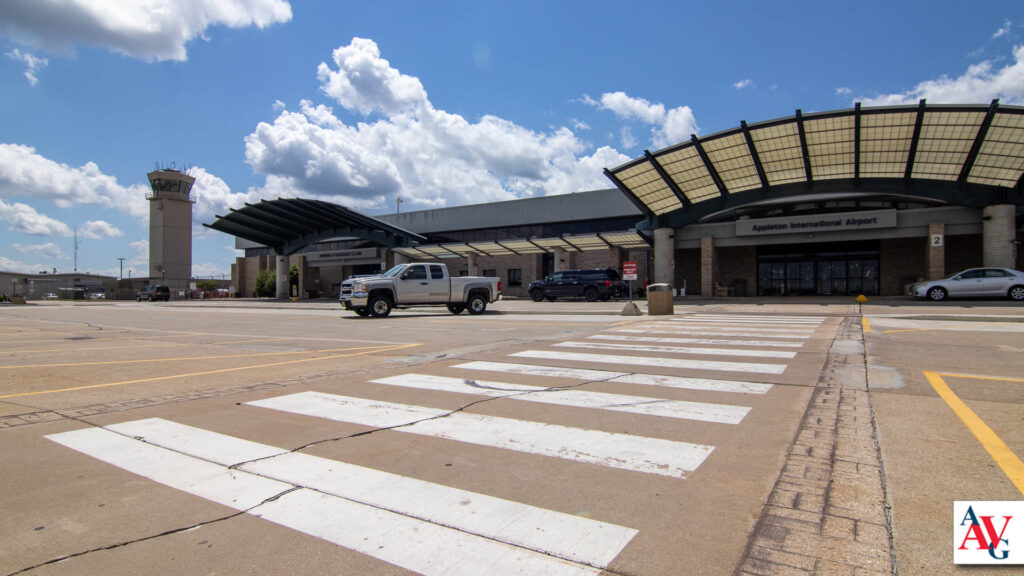
ATW Automates Guest Messaging with New Paging System
Published July 26, 2022
The Appleton International Airport (ATW) recently completed a major renovation to provide guests flying through with an even higher quality experience. From the parking lot to the brand new gates, guests will never miss flight updates with a new state-of-the-art paging system. Hollie Foley, the marketing coordinator for ATW, has already been hearing comments from staff and guests about the improvements with system.
Arrow AV Group was awarded the project after a long bid process. The Arrow engineering team worked closely with airport staff and the project electrician to make sure the new system was properly implemented. In this blog, we will first breakdown the biggest challenges the airport was facing and then show how the new system provided solutions for each one.
Scroll to the bottom to see more project pictures.
Challenges
- No individual area control – The old system was a single zone of speakers across the entire airport. That meant even if an announcement was only relevant to guests at Gate 3, everyone in the terminal would hear the announcement. For those waiting for their flight, non-relevant notifications can be fatiguing.
- Manual volume control – With only a single amplifier to power every speaker in the airport, staff were required to run to the equipment room to make any adjustments in volume. This meant in the rush of peak hours, messages may not have been heard as well if no staff member was available to run to the basement and turn up the volume to accommodate the large crowd.
- Unidirectional paging stations – For any staff to make a page, they would have to find one of the paging stations and hope no one else was trying to make a page at the exact same time. Similar to walkie talkies, whoever started talking first would be heard but the second announcer wouldn’t know their message wasn’t heard.
- Scheduling notifications was complicated – Besides spontaneous individual gate announcements from airlines, staff is required to play pre-recorded messages every three minutes. This required staff to physically be in the maintenance room in the basement to make any adjustments to the schedule.

Solutions
- 16 Zones of Individual Control – Although requiring more cabling and amplifier channels, having individual zones for each area greatly improves the guest experience. Guests now only hear relevant messages to them whether they are checking bags, standing in security, or waiting at their gate. The double-digit amplifier channels was accomplished using a modular card style amplifier from AtlasIED. Cards can fit each zones individual power needs, allowing smaller zones and large zones to fit all in the same chassis.
- Smart Volume Automation – AtlasIED’s AlwaysHEAR™ Ambient Noise Analysis was integrated into the paging system head-end. This system automatically calculates ambient noise and raises or lowers volume so it’s not too loud or too quiet. This is accomplished by strategically installing a microphone in each zone to measure the noise level. Whether there’s a full crowd coming through or just a few travelers, any announcement will be heard at just the right volume. “It’s nice that we have that auto adjusting volume, which makes a huge difference,” said Foley. “We love the auto adjusting volume because sometimes we’re not very busy in between flights and sometimes we’re packed with hundreds of people!”
- Bi-directional Paging Stations – The new paging stations allow staff to see if someone else is currently making an announcement elsewhere. This way staff can wait until their zone is clear to make an announcement or they can record a message to playback after the previous message is played. This way guests don’t miss a thing. This is possible by utilizing Dante, which not only allows for bi-directional audio streaming but a massive amount of metadata to be transferred over standard network cabling. “The airlines can each do their announcements, and they’re not cutting each other off anymore. It’s great!” said Foley.
- Remote Operation of Headend Computer – Alongside the digital signal processors and amplifiers at the headend, the system has a dedicated computer in the rack. Connected to the DSP, the computer hosts the software for scheduling pre-recorded announcements. This headend computer can be accessed from the staff’s office, saving a trip to the basement. “We’ve got so many different messages throughout the airport. It’s really easy to organize which message is playing where and when, and how many times we needed to repeat,” said Foley regarding the message scheduling portion of their new system
Get Expert AV Assistance
Latest Blogs
About Arrow AV Group
We are a premiere audiovisual integration firm serving corporate, government, healthcare, house of worship, and education markets with easy-to-use solutions that drive success. Family-owned and operated from Appleton, WI for over 35 years.



